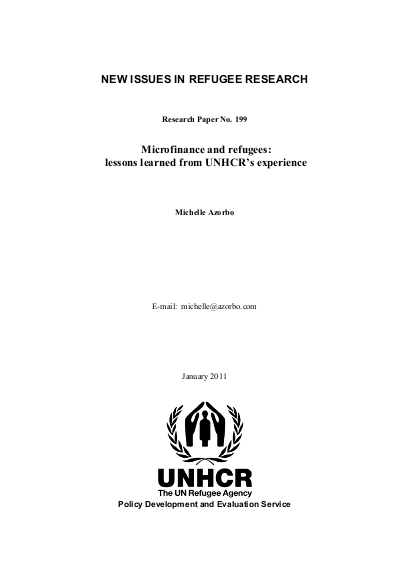
Refugee situations are becoming increasingly protracted, with refugees trapped in a state of limbo, unable to access durable solutions and relying in part on external assistance in order to survive. Humanitarian agencies, including UNHCR, are struggling to find ways of promoting livelihoods and self-reliance in these circumstances.
Livelihood interventions such as microfinance present an attractive option to address these challenges since refugees in long-term displacement do not face an imminent prospect of return or resettlement. Microfinance – and microcredit in particular – provide for a more dignified way of assisting displaced populations as they do not promote a culture of handouts but instead with promise to alleviate poverty through income generation.
This research paper focuses in particular on the last 10 years, as it was in 2000 that UNHCR started to take serious steps to improve its microfinance activities. Its findings are based on UNHCR documents and evaluations as well as external reports and research papers produced by non-governmental organisations (NGOs) and academia. In addition to this, interviews were conducted with UNHCR staff with experiences of working in microfinance within UNHCR.
